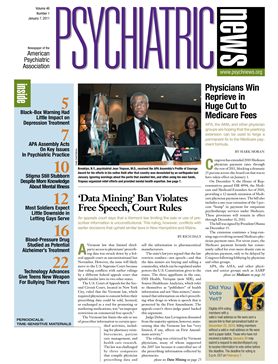Sex, drugs, and rock 'n roll are not the only things rattling around the adolescent brain.
Teens run a potential gauntlet of anxiety, depression, accident, suicide, and other risks by the time they emerge from high school, said B.J. Casey, Ph.D., a professor of developmental psychobiology and director of the Sackler Institute for Developmental Psychobiology at the Weill Medical College of Cornell University in New York City.
One way to better understand the turbulence of adolescence and mitigate some of its less-pleasant consequences is to understand what is going on in the teenage brain, said Casey, who is both the mother of a high-school student and a neuroscientist. She spoke at the American Academy of Child and Adolescent Psychiatry annual meeting in New York last October.
The conventional wisdom about the teenage brain once held that all those adolescent unpleasantries arose because the prefrontal cortex was still under construction.
“But if that were the case, then children would do worse than adolescents,” she said. “So the current paradigm hypothesizes that the limbic system develops faster than the prefrontal cortex, and it wins out at decision-making time.”
Thus, regional differences in brain development and integration produce differences in behavior across development.
“There's not much change in sensorimotor activity, but there are heightened behavioral and neural responses,” she said.
Structural changes in the prefrontal regions, the ventral striatum, and the central amygdala lead to imbalances in how the brain responds to fear-related cues like pictures of fearful faces.
“The more the prefrontal cortex downregulates the amygdala, the stronger the connections between regions, and the better the control over the response,” she said.
That may be generally typical of this stage of development, but the atypical occurs when the prefrontal region is unable to control the response, even after repeated exposure to an empty threat.
Support for this view comes from a variety of studies on learning and extinction in animals and humans.
For instance, knock-in BDNF Val66Met mice demonstrated anxiety about going into an open space. Met allele carriers were slower to extinguish fear, while those without the allele extinguished it quickly.
Similar patterns have been demonstrated in humans, she said.
“Perhaps Met carriers may not be as responsive to exposure therapy or may be slower to respond,” she suggested. “Or more likely, just when you give up on therapy is when they might be about to respond.”
One study of teens saw amygdala activation at fearful cues. Adolescents who rated themselves as highly anxious had high initial activation, and their response stayed high. Nonanxious teenagers also responded initially, but with repeated presentations, activation went back to baseline.
The pattern is of more than theoretical interest, because treatment of anxiety depends not on the initial response to a trigger but on how well the patient can learn to quiet it, she said.
“When I think about psychiatric disorders, I think about development,” said Casey. “I think about how early aberrant learning trains the brain to pick up cues for safety and cues for danger, but how some people cannot unlearn them when the threat is no longer there.”


